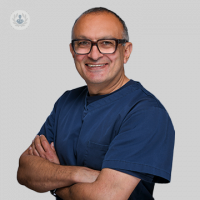Mohs microsurgery
Dr Richard Turner - Dermatology
Created on: 11-13-2012
Updated on: 12-12-2023
Edited by: Conor Lynch
What is Mohs microsurgery, and how is it performed?
Mohs microsurgery is a surgical technique used to treat skin cancer. It is named after Dr Frederic Mohs, who developed the procedure in the 1930s. The goal of Mohs microsurgery is to remove all of the cancerous tissue while preserving as much healthy tissue as possible. This is achieved by removing thin layers of skin one at a time and examining each layer under a microscope until no cancer cells are detected. The procedure is performed under local anesthesia and usually takes several hours to complete.

What does the surgery help treat?
Mohs microsurgery is most commonly used to treat basal cell carcinoma and squamous cell carcinoma, which are the two most common types of skin cancer. It is also used to treat other types of skin cancer, including melanoma. Mohs microsurgery is particularly effective for skin cancers that are located in areas where it is important to preserve as much healthy tissue as possible, such as the face, ears, nose, and hands.
What are the advantages associated with Mohs microsurgery?
The procedure has several advantages over other types of skin cancer surgery. Firstly, it has a high cure rate, with a success rate of up to 99 percent for certain types of skin cancer. Secondly, it is a tissue-sparing procedure, meaning that it removes as little healthy tissue as possible.
This is particularly important for skin cancers located in cosmetically sensitive areas, such as the face. Finally, Mohs microsurgery is an outpatient procedure that can be performed in a doctor’s office or clinic, which means that patients can return home the same day.
What are the associated risks?
As with any surgical procedure, there are some risks associated with Mohs microsurgery. These include bleeding, infection, and scarring. However, these risks are generally low, and most patients experience a smooth recovery.









